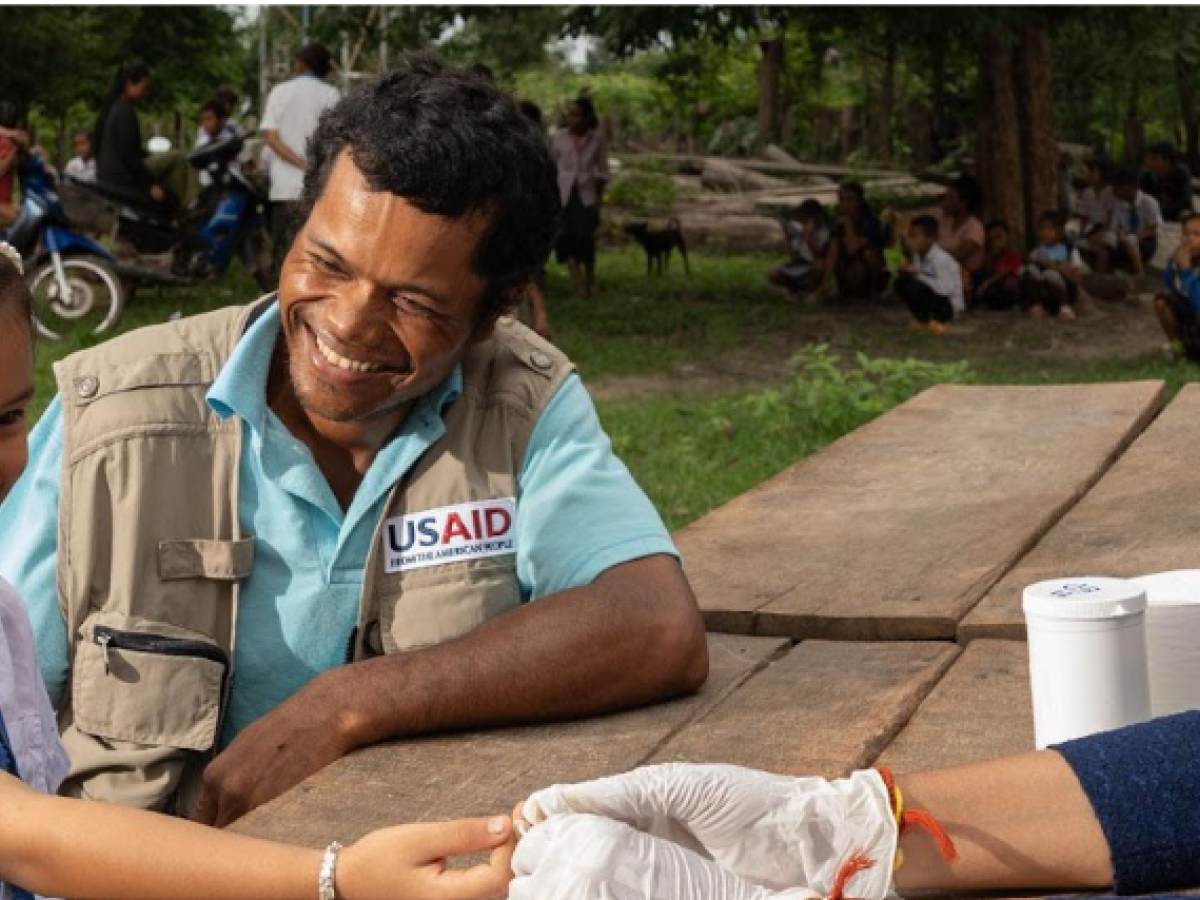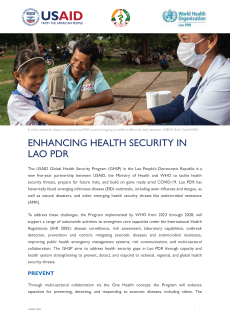The USAID Global Health Security Program (GHSP) in the Lao People’s Democratic Republic is a new five-year partnership between USAID, the Ministry of Health and WHO to tackle health security threats, prepare for future risks, and build on gains made amid COVID-19. Lao PDR has historically faced emerging infectious disease (EID) outbreaks, including avian influenza and dengue, as well as natural disasters, and other emerging health security threats like antimicrobial resistance (AMR).
To address these challenges, the Program implemented by WHO from 2023 through 2028, will support a range of nationwide activities to strengthen core capacities under the International Health Regulations (IHR 2005): disease surveillance, risk assessment, laboratory capabilities, outbreak detection, prevention and control, mitigating zoonotic diseases and antimicrobial resistance, improving public health emergency management systems, risk communication, and multi-sectoral collaboration. The GHSP aims to address health security gaps in Lao PDR through capacity and health system strengthening to prevent, detect, and respond to national, regional, and global health security threats.
PREVENT
Through multi-sectoral collaboration via the One Health concept, the Program will enhance capacities for preventing, detecting, and responding to zoonotic diseases, including rabies. The national health system and efforts to combat AMR will be strengthened. To manage risks in laboratories, the Program will institutionalize biosafety, biosecurity, and bio-risk assessment systems in national public health laboratories. Additionally, the country’s core public health capacities will be strengthened by reviewing implementation under the IHR Monitoring and Evaluation Framework and identifying priority areas.
DETECT
The Program will support the rapid detection of acute public health events through a robust, multi-sectoral surveillance and reporting system, utilizing the District Health Information System Version 2 (DHIS-2). Laboratory quality management systems and capabilities will be improved at national/ subnational levels. Surveillance systems will be strengthened to ensure the rapid detection of EIDs, while integrated respiratory disease surveillance systems will be bolstered to better detect and understand SARS-CoV-2 variants and other respiratory pathogens. In parallel, support will be provided to strengthen health information systems and human resources for health.
RESPOND
The GHSP will strengthen a range of multi-sectoral public health emergency preparedness and response capabilities. Emergency management will be enhanced via Public Health Emergency Operation Centers at national/provincial levels, while emergency medical team response capacities will also be strengthened for crisis response. Crucially, the GHSP will ensure a highly skilled multi-sectoral epidemiological workforce through the Lao Field Epidemiology Training (FET) program, other frontline training courses, and strengthened One Health collaboration. Furthermore, the Program will ensure effective risk communications reaches at-risk and impacted populations, as well as enhance points of entry (POE) preparedness and response capacity, and central and subnational capacity for infection prevention and control (IPC).
ANTICIPATED OUTCOMES
To achieve its vision, the GHSP is guided by regional and country strategies, including the Asia Pacific Health Security Action Framework. The Program's goal of improving health security in Lao PDR will be achieved through three main outcomes:
1. Preventing public health emergencies through strengthening Lao PDR's capacity to prevent zoonotic diseases, institutionalizing biosafety and biosecurity measures in national public health laboratories, and strengthening human resources for health.
2. Detecting outbreaks and public health emergencies through strengthening Lao PDR's surveillance system, establishing an integrated respiratory pathogen surveillance system, and strengthening health information systems.
3. Responding to outbreaks and public health emergencies rapidly and effectively by enhancing Lao PDR's public health capacities, enhancing IPC measures, improving risk communication, and enhancing public health preparedness and response capacity at POE.
For more information visit www.usaid.gov/laos or contact infolaos@usaid.gov


